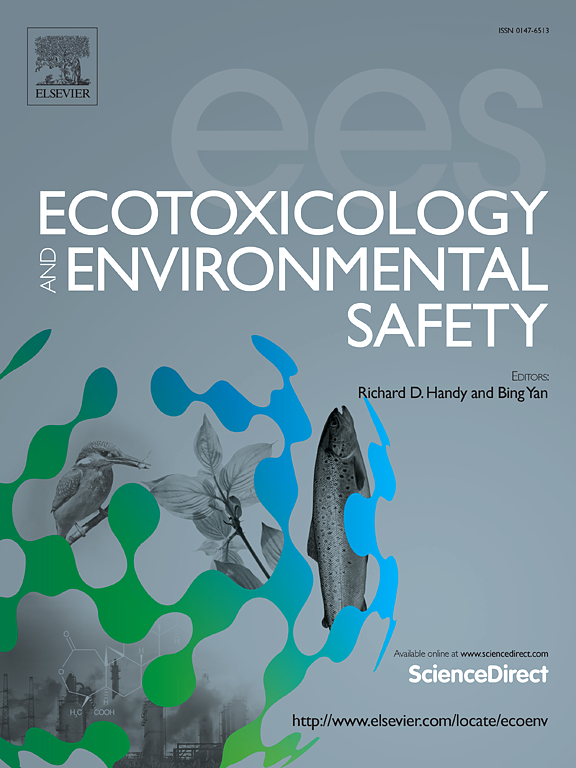Association between plasma perfluoroalkyl substances and high-grade serous ovarian cancer overall survival: A nested case-control study
IF 6.2
2区 环境科学与生态学
Q1 ENVIRONMENTAL SCIENCES
引用次数: 0
Abstract
Background
Although evidence suggests that perfluoroalkyl and polyfluoroalkyl substances (PFASs) are positively correlated to several disease risks, no studies have proven if plasma PFASs are related to ovarian cancer survival.
Objective
To explore the association between plasma PFASs and high-grade serous ovarian cancer (HGSOC) overall survival (OS) in the population who did not smoke.
Methods
We conducted a nested case-control study within the Ovarian Cancer Follow-Up Study, matching 159 dead patients and 159 survival ones based on body mass index, sample date, and age at diagnosis. Nine plasma PFASs were extracted by solid phase extraction and measured using a liquid chromatography system coupled with tandem mass spectrometry. Baseline plasma concentrations of perfluorinated carboxylic acids (PFCAs) [perfluorooctanoic acid (PFOA), perfluorononanoic acid (PFNA), perfluorodecanoic acid (PFDA), and perfluoroheptanoic acid (PFHpA)] and perfluorinated sulfonic acids (PFSAs) [perfluorooctane sulfonic acid (PFOS) and perfluorohexane sulfonic acid (PFHxS)] were calculated. Odds ratios (ORs) and corresponding 95 % confidence intervals (CIs) were calculated via conditional logistic regression models. To elucidate the combined effects, Bayesian kernel machine (BKMR), and regression quantile g-computation (QGC) models were utilized.
Result
In full-adjusted model, significant differences were observed between HGSOC survival and perfluorobutane sulfonic acid, PFHpA, PFHxS, PFOS, PFCA, and PFSA. ORs and 95 %CIs were 2.74 (1.41–5.31), 1.97 (1.03–3.76), 2.13 (1.15–3.95), 2.28 (1.16–4.47), 3.74 (1.78–7.85), and 2.56 (1.31–5.01), respectively for the highest tertile compared with the lowest tertile. The QGC and BKMR models indicated that elevated concentrations of PFAS mixtures were associated with poor OS in HGSOC.
Conclusions
Both individual and mixed plasma PFASs may relate to poor OS of HGSOC. Further research is necessary to establish causality, and it is recommended to reinforce environmental risk mitigation strategies to minimize PFAS exposure.
求助全文
约1分钟内获得全文
求助全文
来源期刊
CiteScore
12.10
自引率
5.90%
发文量
1234
审稿时长
88 days
期刊介绍:
Ecotoxicology and Environmental Safety is a multi-disciplinary journal that focuses on understanding the exposure and effects of environmental contamination on organisms including human health. The scope of the journal covers three main themes. The topics within these themes, indicated below, include (but are not limited to) the following: Ecotoxicology、Environmental Chemistry、Environmental Safety etc.

 求助内容:
求助内容: 应助结果提醒方式:
应助结果提醒方式:


